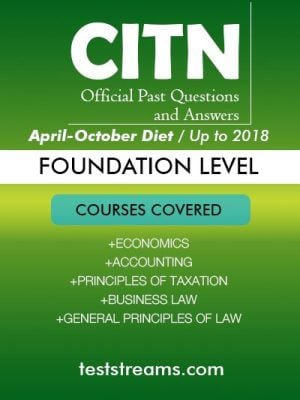Free Mathematics Lesson Note JSS 1
This MATHEMATICS Lesson Note was pulled from our book (Lesson Note on MATHEMATICS for JSS1 MS-WORD); Compiled to serve as a reference material to help teachers draw out their lesson plan easier, saving you valuable time to focus on the core job of teaching.
The Lesson notes are based on the current NERDC curriculum (UBE compliant)
This MATHEMATICS Lesson Notes CoversThe Following Topics
1. DEVELOPMENT OF NUMBER SYSTEMS
2. LARGE AND SMALL NUMBERS
3. FACTORS AND MULTIPLES – LCM AND HCF
4. FRACTIONS 1 – IMPROPER AND PROPER FRACTIONS
5. FRACTIONS 2: DECIMALS AND PERCENTAGES
6. FRACTIONS 3 – MULTIPLICATION AND DIVISION
7. FRACTIONS (CONTINUED)
8. ESTIMATION
9. REVISION OF FIRST TERM’S WORK
10. APPROXIMATION
11. BASE TWO ARITHMETIC
12. SIMPLE EQUATIONS
13. REVIEW OF FIRST HALF TERM’S WORK AND PERIODIC TEST
14. BASIC OPERATIONS (CONTINUED)
15. USE OF SYMBOLS 1: LETTERS FOR NUMBERS
16. ALGEBRAIC SIMPLIFICATION 2: BRACKETS
17. REVIEW OF THE FIRST HALF TERM’S WORK AND PERIODIC TEST
18. SIMPLE EQUATIONS
19. GEOMETRY
20. THREE DIMENSIONAL SHAPES
21. IDENTIFICATION AND PROPERTIES OF ANGLES
22. THEOREMS
23. CONSTRUCTION: PARALLEL AND PERPENDICULAR LINES
24. STATISTICS 1 – DEFINITION
25. STATISTICS (CONTINUED) – GRAPHICAL PRESENTATION OF DATA
26. STATISTICS – AVERAGES
Sample note
Topic: Development of Number Systems
It is most likely that mathematics began when people started to count and measure. Counting and measuring are part of everyday life. Nearly every language in the world contains words for numbers and measures.
People have always used their fingers to help them when counting. This led to collect numbers in groups: sometimes fives (fingers of one hand), sometimes tens (both hands) and even in groups of twenty (hands and feet). For example, someone with twenty three sheep might say, ‘I have four five and three’ sheep or one twenty and three’ sheep. It will depend on local custom and language. In every case, the number of sheep would be the same.
When people group numbers in fives we say that they are using a base five method of counting. Most people use base ten when counting. For this reason base ten is used internationally.
The table 1.1.below gives the words for the number 1 to 20 in the Hausa, Igbo and Yoruba languages.
Hausa Igbo Yoruba
1 Daya Out Ookan
2 Biyu Abuo Eeji
3 Uku Ato Eeta
4 Hudu Ano Eerin
5 Biyar Ise Aarun-un
6 Shida Isii Eefa
7 Bakwai Asaa Eeje
8 Takwas Asato Eejo
9 Tara Iteghete Eesan
10 Goma Iri Eewa
11 Goma sh daya Iri na out Ookanla
12 Goma sha biyu Iri na abuo Eejila
13 Goma sha uku Iri na ato Eetala
14 Goma sha hudu Iri na ano Eerinla
15 Goma sha biyar Iri na ise Eedogun
16 Goma sha shida Iri na isii Eerindinlogun
17 Goma sha bakwai Iri na asaa Eetadinlogun
18 Goma sha takwas Iri na asato Eejidinlogun
19 Goma sha tara Iri na iteghete Ookandinlogun
20 Ashirin Iri abuo OOgun
Other bases of counting: Seven and Sixty
There are seven days in a week. Suppose that a baby is two weeks and 5 days old. This means that it is two lots of seven days and 5 days old, 19 days altogether.
Example 1
Find the total of 1 week 5 days, 6 days and 3 weeks 4 days. Give the
a. in weeks and days b. in days.
Solution
wk d Method in days column:
1 5 5 + 6 + 4 = 15 days
0 6 = 2 x 7 days + 1 day
3 4 = 2 weeks + 1 day
———–
6 1 Write down 1 day and carry 2 weeks
Answer:
a. 6 weeks and 1 day,
b. 6weeks 1 day = 6 x 7 days + 1 day
= 42 days + 1 day = 43 days.
Example 2
Find the number of seconds in 3 min 49 s.
Number of seconds in 3 min = 3 x 60 s = 180 s
Number of seconds in 3 min 49 s = 180 s + 49 s
= 229 s
Symbol for Numbers
As civilization developed, spoken languages were written down using symbols. Symbols are letters and marks which represent sounds and ideas. Thus the words on this page are symbols for spoken words. Numbers were also written down. We use the words numerals for number symbols.
The first numerals were probably tally marks. People who looked after cattle made tally marks to represent the number of animals they had. The tally marks were scratched on stones or sometimes cut on sticks.
We still use the tally system; it is very useful when counting a large of objects.
We usually group tally marks in fives; thus III mean three fives and two, or seventeen. Notice that in each group of five, the fifth tally is marked across the other four: IIII = 4; = 5.
Roman system
There are many ancient methods of writing numbers. The Roman system is still used today. The Romans used capital letters of the alphabets for numerals. In the Roman system I’s stand for units, X’s stands for tens ad C’s stands for hundreds. Other letters stand for 5’s, 50’s and 500’s. Table 1.2 below shows how the letters were used.
1 I 20 XX
2 II 40 XL
3 III 50 L
4 IIII or IV 60 LX
5 V 90 XC
6 VI 100 C
7 VII 400 CD
8 VIII 500 D
9 IX 900 CM
10 X 1000 M
Roman numerals were first used about 2 500 years ago. They are still in use today. You sometimes find Roman numerals on clockfaces and as chapter number in books.
Example
What number does MDCLXXVIII represent?
Work from the left:
M = 1000
D = 500
C = 100
L = 50
(two tens) XX = 20
V = 5
(three units) III = 3
Addings: MDCLXXVIII = 1678
A simple code
The Romans used letters of the alphabet to stand for numbers. We can use numbers to stand for letters of the alphabet. This gives a simple code shown in Table 1.3 beow.
A B C D E F G H I J K L M N O P Q R S T U V W X Y Z
1 2 3 4 5 6 7 8 9 10 11 12 13 14 15 16 17 18 19 20 21 22 23 24 26 26
ASSESSMENT
1. What does (6, 1, 20)(2, 15, 25) mean in the code in table 1.3 above?
2. Find the total of 2 weeks 6 days, 5days and 6 weeks 5 days. Give the
(a) in weeks and days (b) in days.
3. What number does CCXC represent
ANSWER
1. From the table,
6 = F, 1 = A, 20 = T
(6, 1, 20) = FAT
2 = B, 15 = 0, 25 = Y
(2, 15, 25) = BOY
Thus (6, 1, 20)(2, 15, 25) means FAT BOY.
2.
wk. d Method in days column:
2 6 6+ 5 + 5 = 16 days
0 5 = 2 x 7 days + 2 days
6 5 = 2 weeks + 2 days
———–
10 2 Write down 2 days and carry 2 weeks
(a) 10 weeks and 2 days
(b) 10 weeks and 2 days = 10 x 7 = 70 days
70 days+ 2 days = 72 days
3. CC = 200
XC = 90
Adding: CCXC = 290
Get the complete Lesson Note with more content at very affordable price. Click here now.






